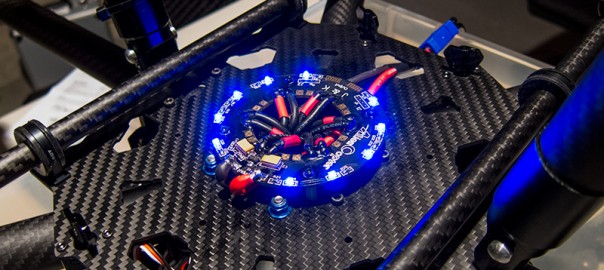Hi Mediaguru,
I have just picked up/stumbled upon this post - Nice to see some other user going for a self build option.
I built myself a FY690s some time ago and have been having a blast with it ever since. In fact my Phantom has been relegated to it's flight case for a couple of months now. The FY690s is way more stable in windy conditions than the Phantom ever could be and I get 20 mins+ flight out of the craft fully loaded with 2 x 5000mah packs, 3 axis gimbal, iOsd, Vtx etc etc. Very pleased with the whole set-up. My AUW is around 3,360g.
You've probably done your homework but what combination of motors/esc's did you go for? Do you know what your AUW is going to be as you need to be very careful with your choice of motors for g/thrust together with a careful choice of prop pitch.
Obviously if you take your AUW and divide by six that will give you your thrust per motor required but this will be to just get airborne only. You want to double it and add 10 - 20% overhead to give yourself a combination that will actually fly.
Also, watch out VERY carefully for esc timings on those pancake style motors. A lot of esc's just will not sync with the motors o will lose sync once stressed - Do a LOT of testing.... Prop weight can make a difference here as the heavier the prop the more inertia it has.
Remember - eCalc is your friend here (and fairly accurate as well) -
http://www.ecalc.ch/xcoptercalc.php?ecalc&lang=en
Happy to help if you have any question as I've probably come across most problems during my build.
Oh, one final thing - since redundancy seems important to you (and it was to me which is why I went with a hexa). many, many people will run two packs in parallel to give them more flight time. Indeed I run two packs wired this way but nearly everybody I have come across connects them up using a parallel harness (either pre-made or home brew). To me this seemed like a weak link in the whole redundancy chain since if ONE connector failed you lose total power. I thought 'There has to be a better way' so I decided to wire my packs using two independent power lines to the PDB. The end result is the same (two packs in parallel) but should you lose a connector or a pack fails on you, you still have a completely isolated power supply at the correct voltage feeding the PDB. You would notice a faster drop in voltage via telemetry and bring your hex in quickly for a landing but it wouldn't fall out of the sky.
Oh, and a final final(?) thing to watch out for - I'm guessing you know about the problems that can ensue if your esc's are non opto and have becs internally (assuming you are using the bec output)? Make sure you disconnect 5 of them and only use ONE positive connection for all of them otherwise horrible things will happen! This wasn't an issue for my since I didn't need 5 volts for anything - I run the Naza with PMUv2 and 5 volts supplies the FC with power for the Futaba RX being fed via S-BUS.
My build was basically:
Tarot FY690s frame
Extra battery plate and 12mm support rails
6 x T-Motor MN3508 20 580kv
6 x T-Motor 12x4 v2 carbon Fiber props
6 x DJI 30amp Opto esc's
DJI Naza M v2 with GPS
DJI iOSD Mini
Folding CF GPS mount
Futaba R2008SB RX
160amp Power Distribution Board - running EC5 connectors
Immersion RC 600mW Video TX
Fat Shark Spironet Ant x 2
2 x 5000mah Lipos wired in parallel through the board not the harness in case one connection fails
1 x 1000mah Lipo - to power VTX and gimbal
Arris CM3000 3 axis gimbal
That's my two pennyworth for now - if I can help with anything give me a shout.







